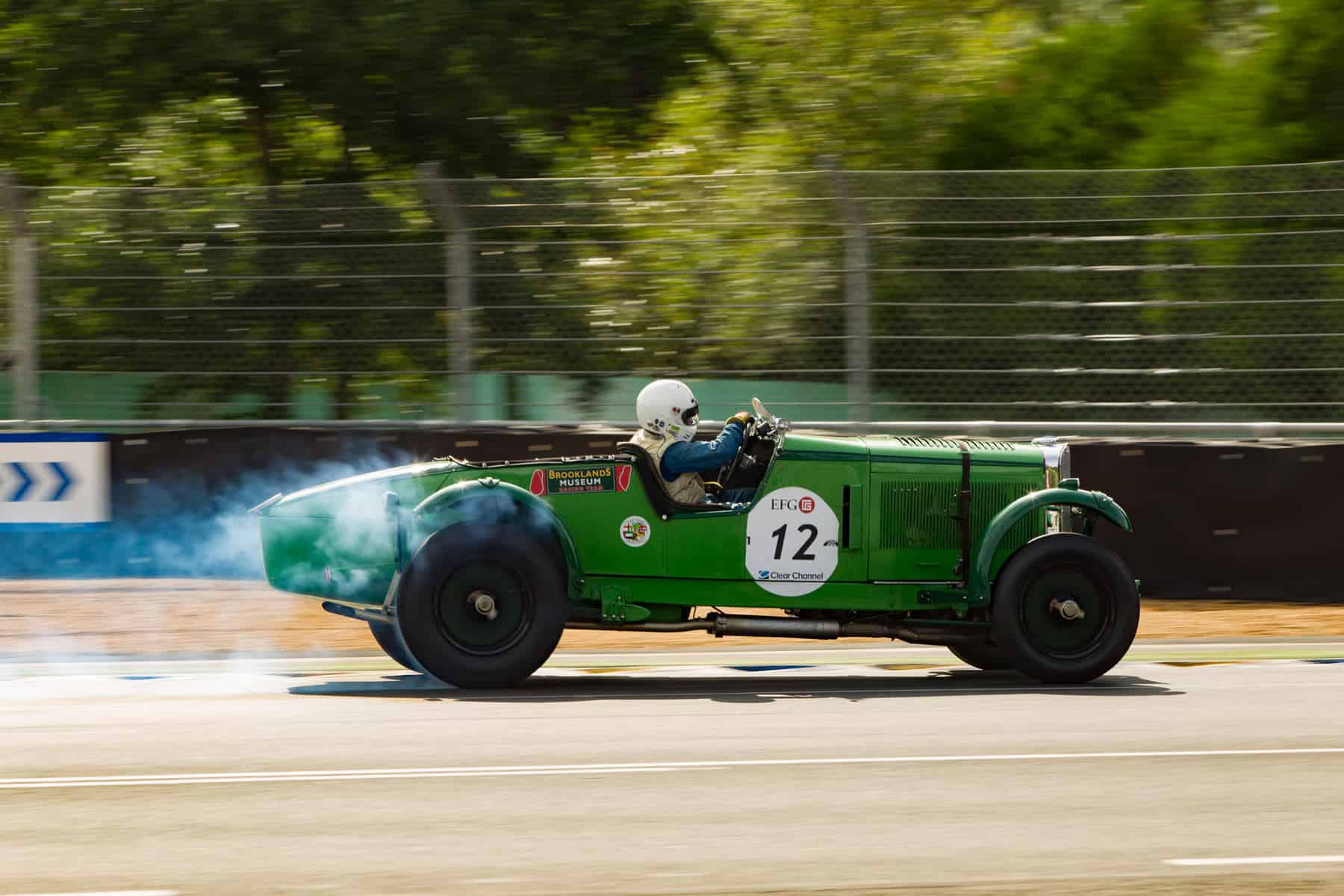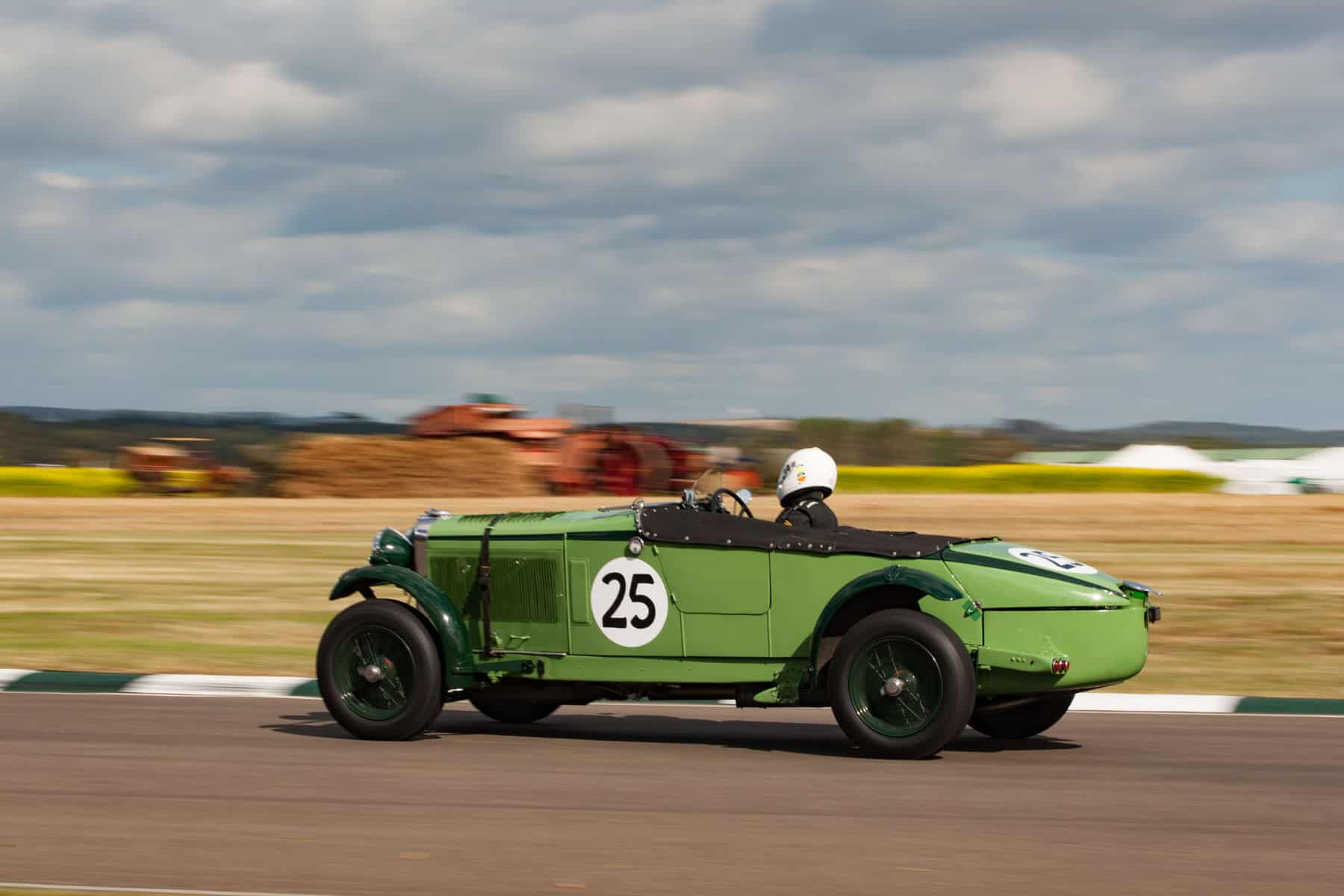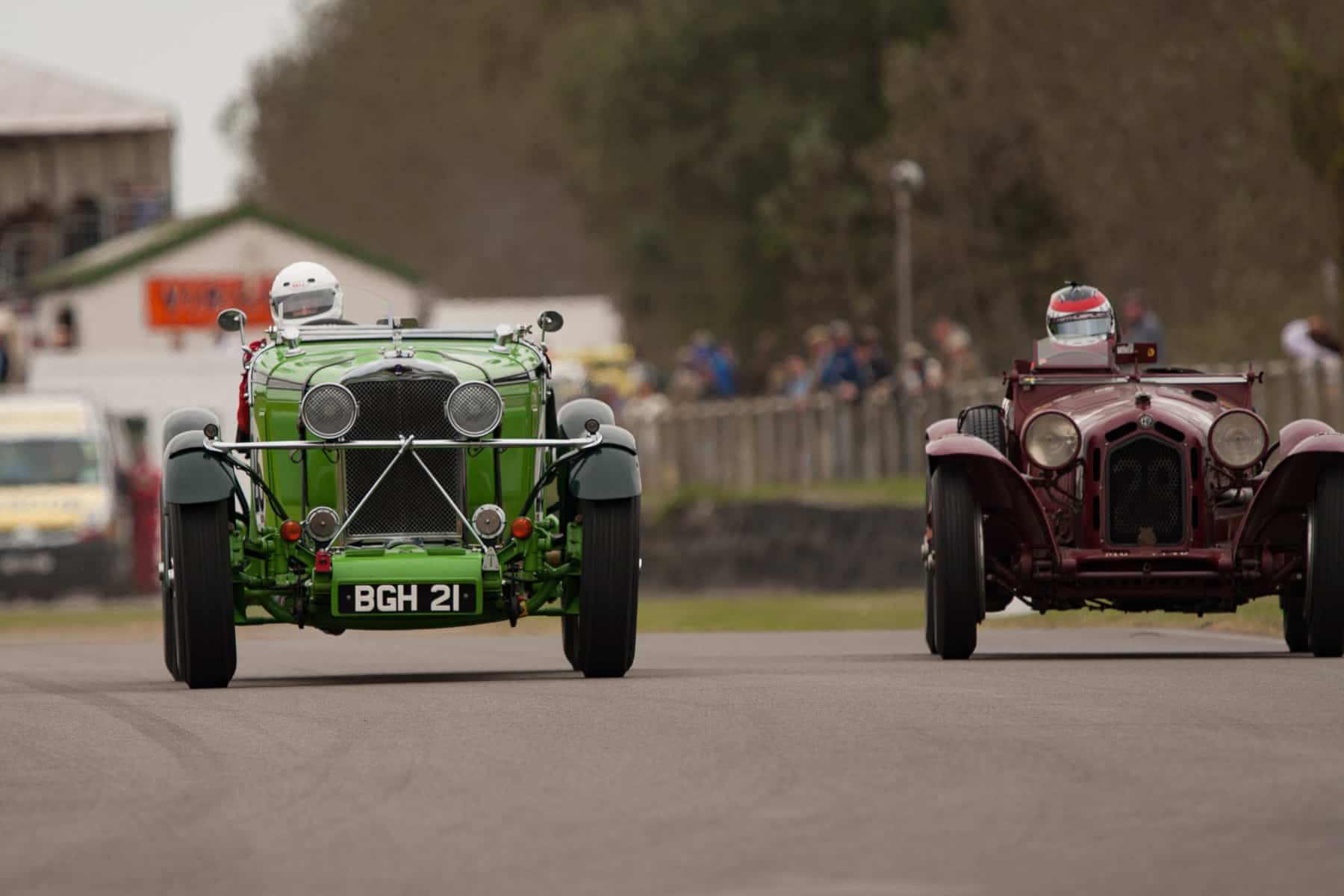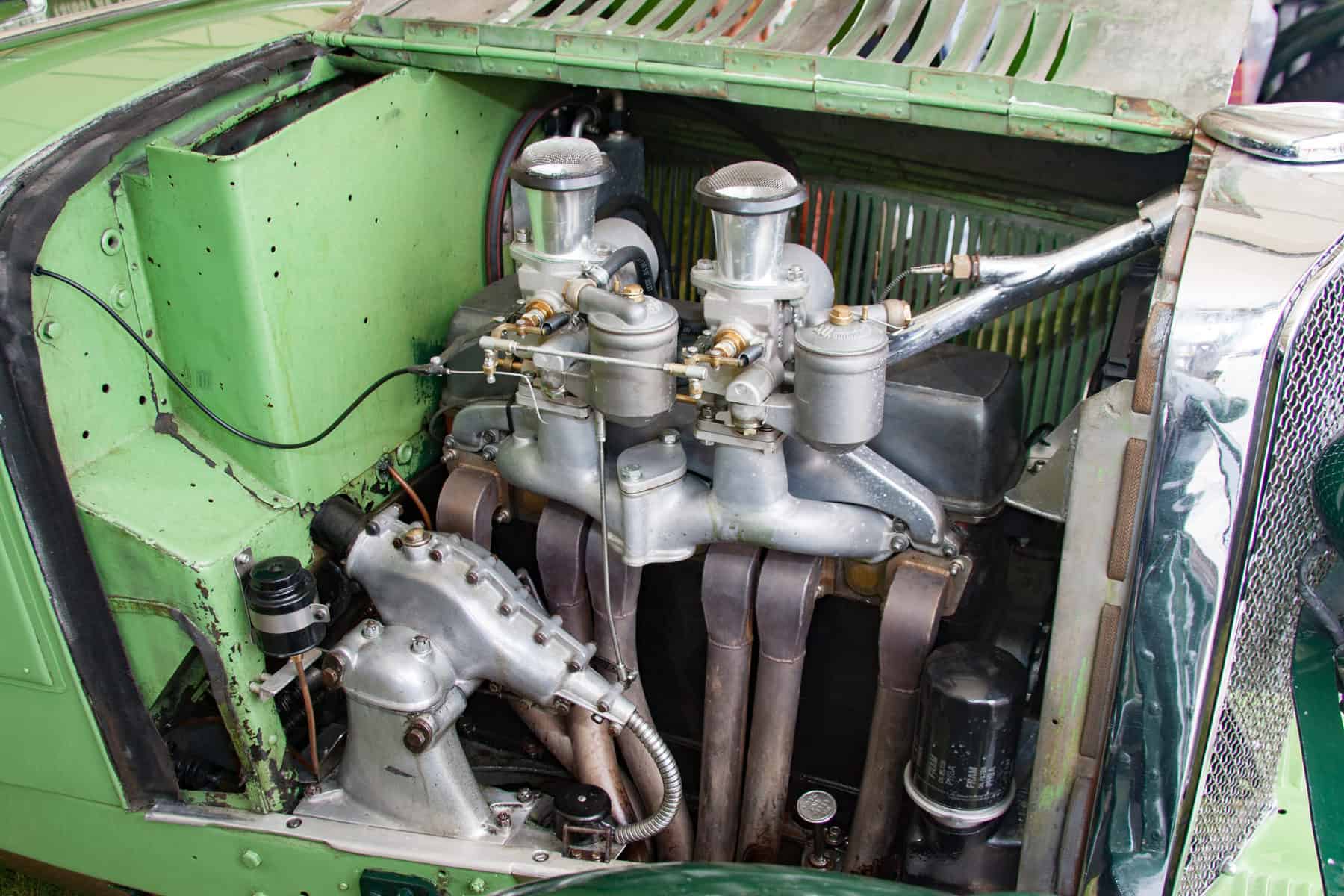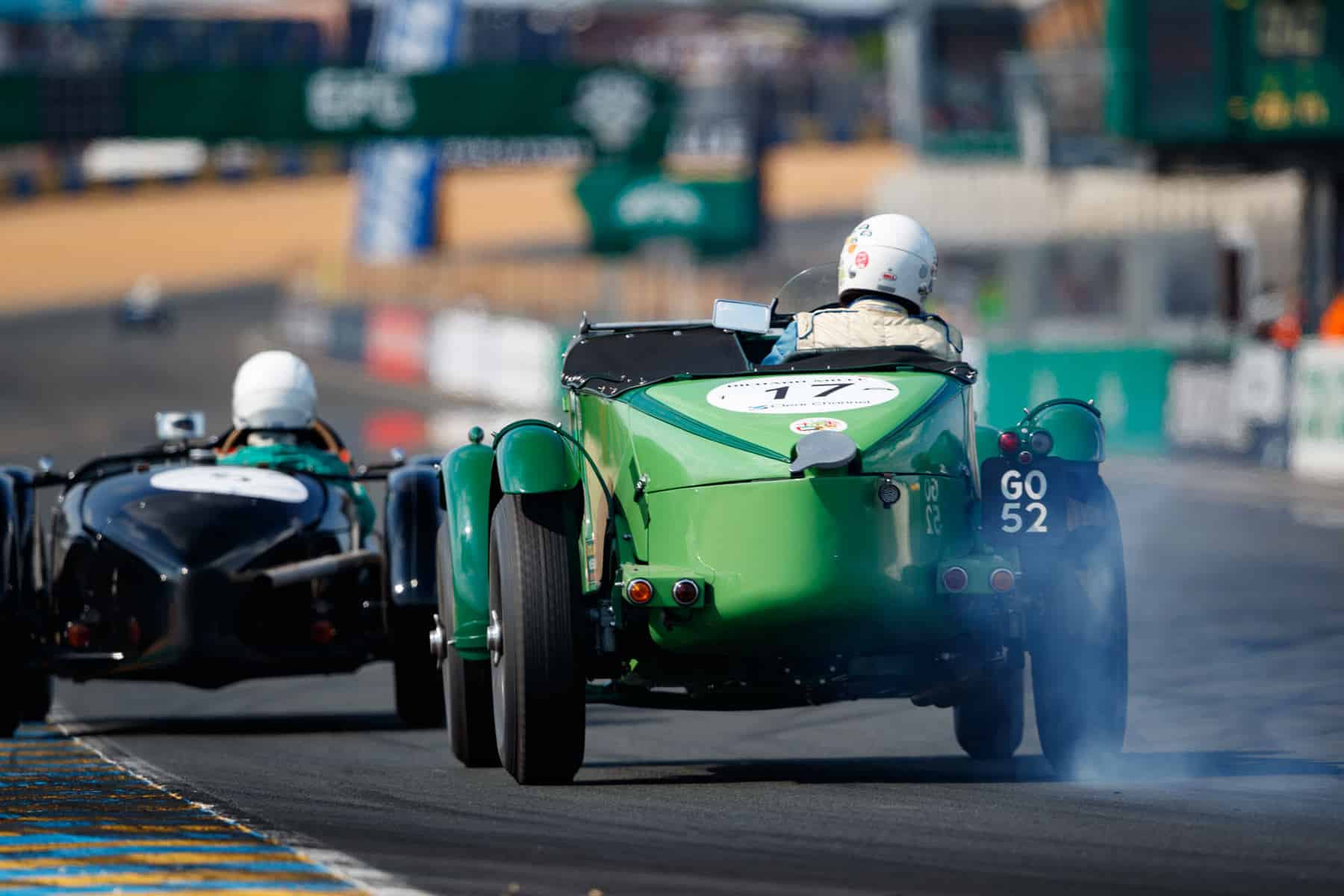Talbot AV105
“Invincible” – and revered
WORDS & IMAGES BY: WOUTER MELISSEN
“There are not many prewar cars that can do the Mille Miglia, Le Mans Classic, Goodwood Revival, the Flying Scotsman, the Concours of Elegance at Hampton Court, and can also take four people down to the pub!”
The remarkable machine British historic racer Michael Birch is referring to is the works Talbot AV105, produced in very small numbers during the early 1930s. “Can do” is putting it mildly, as these six-cylinder-engined machines compete for victory anywhere they are entered.
“I really could talk for hours as to the reasons why they are so good and also easy to drive fast!” Gareth Burnett adds. His company, Pace Historics, prepares most of the surviving works cars and he himself is perhaps the fastest driver of all behind the wheel of a Talbot 105. He continues: “To put it simply, the design of the car is really integrated as a whole by one designer – Georges Roesch, who set out to build a vehicle with total economy to anything that is surplus to requirement – it had to be a commercially viable production vehicle.”
Originally established in 1902 as Clément-Talbot, the London-based manufacturer first sold rebadged, imported Clément cars and later started building cars following a proprietary design. In 1919 and 1920, Talbot merged with Darracq and then Sunbeam to form STD Motors. The company’s chief engineer was the hugely talented Louis Coatalen. One of his more inspired decisions was to commission Roesch with the design of an all-new Talbot during the mid-1920s to replace the rather dreadful cars that had been built during the first half of the decade following a design that had originated in Paris.
Born in Geneva, Switzerland, Roesch had already joined Clément-Talbot in 1916 having previously worked for Delauney-Belleville in France and Daimler in England. In Profile Publications edition #27 covering the Talbot 105, author D.B. Tubbs describes Roesch as “one of the great artists of the automobile. His productions have an integrity seldom found elsewhere and he can always be counted upon for an elegant solution to any problem.”
At the time Roesch designed the new generation of Talbots, there were a variety of solutions to get more horsepower: increase the size of the engine, add a supercharger, or fit a more complicated twin-cam valve-train. The Swiss engineer was no fan of these solutions and instead set about creating a very small, pushrod straight six but with every part carefully designed to save weight and increase efficiency. The result was an engine capable of producing similar performance figures to engines that were twice the size and weight.
“The engines are very compact, a short stiff crankshaft with seven main bearings and yet large ports/valves for good breathing. Despite being pushrods they had very light valve gear that allowed them to rev safely to well over 5,000 rpm in period,” Burnett explains. “They were designed for double-figure compression ratios, which was unheard of for a production engine in period – running up to 11.4:1. Unfortunately, normal commercial pump fuels of that era were not up to coping with this, so in many races they had to run lower than optimum.”
The new design debuted in the 14/45 model, which had a displacement of 1,666 cc. It had a fiscal rating of 13.9 hp and an actual output of around 45 hp — hence the name. Over time, the engine grew in size to 2,960 cc with a 75 mm bore and 112 mm stroke for the 105 model, introduced in 1931. Depending on the state of tune, this engine was capable of anywhere between 100 and 140 hp. The ultimate development of the Roesch straight six was used in one of the works cars and had a displacement of 3,377 cc and could produce upwards of 164 hp on benzole.
Although a separate unit, the four-speed preselector gearbox was an integral design with the engine. “Pioneered” forty years later on the Mini, the engine and gearbox were lubricated by a single system that used a pump running at engine speed. One of the benefits of the engine and gearbox being designed as one was the very high rigidity. This meant they could be mounted in the ladder frame as a fully stressed member. Massive drums brakes were fitted, which also receive full praise from Burnett: “The drum brakes provide stopping power as good as most disc brake setups.”
The 14/45 model had been designed as a production road car and use in competition was initially of little interest to Roesch. With its lightweight and compact design, the six-cylinder Talbot was of course perfectly suited to racing. Especially with the introduction of the 2.3-liter 75 and 90 models in 1930 did customers start to take note. Specialist preparer Fox & Nicholl expressed their intention to run a pair of cars in the 1930 Brooklands Double 12. Roesch was keen to help out and with his involvement, this became a proper works effort. As per the regulations, Fox & Nicholl fitted rather inconspicuous four-seater bodywork to the Talbot 90 chassis. Roesch fitted the engines with domed pistons, which helped raise the compression to 10.0:1.
The Brooklands debut was eventful and formed a prelude to the often unfulfilled period racing career of the Roesch Talbots. Needless to say, the two cars were very fast, but they collided, causing a fatal accident. In June of 1930, there was a rare competition highlight when the two cars finished third and fourth overall in the 24 Hours of Le Mans. They were beaten only by the 6.5-liter Bentleys and won the prestigious Index of Performance. Later in the year, the Talbot 90s scored several more class victories in events like the Irish Grand Prix, Ulster Tourist Trophy, and the B.R.D.C. 500 at Brooklands.
In the spring of 1931, the 3.0-liter-engined 105 was ready. Although now nearly twice the size, the engine was still virtually identical to that of the 14/45. The main difference was the staggered valve-train used on the 3.0-liter unit. Three works cars were built by Fox & Nicholl and they debuted with a 1-2-3 finish in the Brooklands Double 12. At Le Mans, one of the cars finished on the podium again. There was also great success in the Alpine Trial where a barely modified 105 won the Coupe des Glaciers for losing no marks. The works team entered the event with three cars in 1932. All three finished without penalty, earning Talbot the Coupes des Alpes. This feat was repeated in 1934.
Even Roesch’s brilliant design could not help save STD Motors through what were very difficult economic times. The company was sold to the Rootes Group in 1935, which brought an end to the works racing effort. Roesch did design a new Talbot and several prototypes were built but it never entered production. The Swiss engineer left the company to help David Brown design a new tractor. Shortly thereafter he joined jet-engine pioneer Frank Whittle and worked on gas turbine designs for the remainder of his career. Fox & Nicholl duly returned to Le Mans in 1935 with Lagonda-based racers, which won the race outright.
“In many ways they were twenty-five years ahead of their time – especially the engine, which is why it is easy to now make them go very quickly, just like the works did in period (lapping Brooklands in 1938 at 129.7mph),” Burnett explains. “Those advanced design features that made them so good originally were not understood by the mechanics and restorers of the 1950s and ’60s – for example, to remove the engine, firstly you remove the back axle, then the gearbox, and finally the engine. So they gained a reputation of being difficult and expensive to maintain.”
That the works cars still exist today is really down to one person, the late Anthony Blight. He acquired all seven of the original 105 works cars and set about restoring them to their original configuration and campaigned them for many years with great success in historic events. In 1971, he also published the definitive work on the subject, the aptly titled, Georges Roesch and the Invincible Talbot. Since Blight’s untimely passing in 1990, the cars have found great homes and are continued to be raced by a small group of enthusiasts. Among them is Brit John W. Ruston, who currently owns four of the cars and has owned most of the others.
Intrinsically very fast, the Talbots are also surprisingly easy to drive as Birch says: “The cars are very easy to drive, they have a pre-sector gear box so they are perfect for both rallying and racing, as you can select your next gear in advance, ready to engage at the critical moment.” Burnett concurs: “I would say that they are the only prewar touring car that drives akin to modern car of the 1960s – in that they can be driven on the nose (front end) and the back end will not bite. With 50/50 weight distribution the balance is superb and are almost impossible to spin – I have never spun one in over twenty-five years of competitive driving.”
Burnett attests that the great roadholding was always a feature of the Talbots: “If you look back to period racing, in particular the road racing, they were only beaten on speed by the 8C Alfas – and in particular at the ‘tricky’ circuits as the Ards TT they were only a bit slower.” He continues: “As Earl Howe said in 1931 – ‘if only they were a bit lower and with a blower they would be a world beater.'” Today the cars are just that, with victories at Silverstone, Goodwood, and Le Mans to show for it, often with Birch and Burnett behind the wheel.
Although successful in period, the Talbots ultimately lacked a major international victory. Ruston describes the Talbots’ contemporary career best: “The underlying fact is they were very quick in period but (Talbot) became the nearly manufacturer.” Offering a typical example: “One of those should have been finishing Mille Miglia in the top three rather than going off road, 100 km before Brescia!” One achievement that will always be Talbot’s is the mind-boggling 129.7 mph lap record for a four-seater touring car around Brooklands.
Very much a Swiss watch in an English business, the cars were on the brink of being forgotten at one point. The efforts of Anthony Blight and several other enthusiasts have ensured that the Invincible Talbot is as revered as it should be. So well known now, the Team Cars are simply referred to by their registration number.
